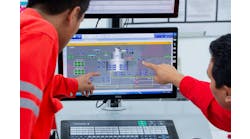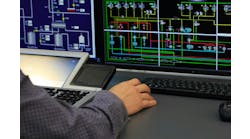Whether they’re for equipment training, monitoring or maintenance practices, augmented-reality and virtual-reality technologies provide more information than meets the eye. This panel of eight industry experts breaks down the illusions and cuts through the hype to provide real-world insights.
What role does augmented reality (AR) or virtual reality (VR) play in machine monitoring and diagnostics?
These digital twins are immersive, virtual environments that provide a safe situation where plant personnel can familiarize themselves with equipment in normal situations, as well as prepare for abnormal situations. Engineers can evaluate plant performance versus the digital plant model to identify vulnerabilities and test new strategies or alternative work processes. Technicians can practice difficult repairs before undertaking the real thing.
Also read: Can I monitor and program using the same remote-access hardware or software?
Virtual reality can be very helpful in training scenarios, where new technicians may not always have the benefit of having access to the real equipment when learning how to maintain or operate it.
The technical expert can guide the field technician because they see the same thing on a machine. But even without the expert on line, the AR glasses will be able to show data sheets and service manuals. It will be easy to refer to this information at a glance while your hands are free to fix the problems with the machine. I expect these technologies to be a real productivity booster.
There is now no need to understand how to fix a specific device or how to configure. Just find the YouTube video, and you'll have immediate feedback on how to accomplish the task. Merge such types of specialized information with AR, and workers will no longer have to do it the first time or learn the hard way.
VR glasses with location designation could understand where you are in the plant and help to highlight the right asset of interest. Another application would be motor nameplate and maintenance procedure popups on the display as you are looking at various assets. And imagine visual inspection from connected sensors. Just look at a motor and see hotspots or vibration epicenters. Look at a pump and see cavitation.
Homepage image courtesy of Stuart Miles at FreeDigitalPhotos.net













